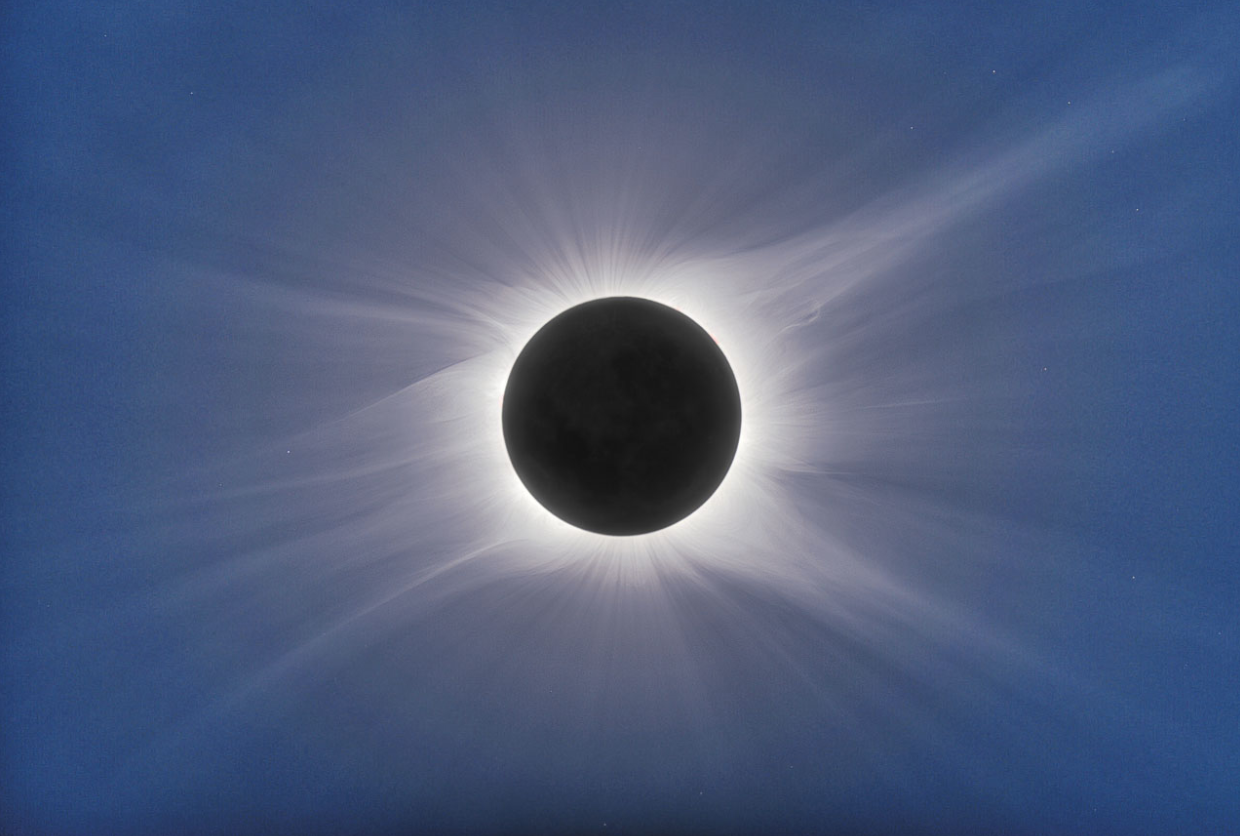On Monday, April 8, a total solar eclipse stretched across North America, throughout Mexico, the United States and Canada. The U.S. path of totality spanned 15 states from Texas to Maine, while the rest of the country had a chance to catch a partial eclipse, Sarasota included. A total eclipse of this scale won’t reoccur in the United States until 2044, marking it as a special celestial event for many Americans.
Eclipses result when the sun, moon and earth align in a set fashion. During solar eclipses, the moon will cross between earth and the daytime sun, casting an unusual darkness across a portion of the earth for just a few minutes at peak totality. Under the moon’s shadow, temperatures plunge and the brightest stars and planets become starkly visible, while the sun rays leak out lazily from behind.
In a pre-eclipse email interview with the Catalyst, Professor of Physics George Ruppeiner described how, for Sarasota viewers, “the start sees the first little bite taken out of the sun by the moon, the peak sees 60 percent of the sun covered by the moon, and the end has the moon pulling entirely clear of the sun.”
Ruppeiner, known to decades of New College students for teaching astronomy, was ready for more. “I will be in Texas for this event. There, I can see the total eclipse. I have been waiting seven years since the last one,” he stated.
He shared that back home, “The NCF Descriptive Astronomy class will have a telescope, equipped with a strong solar filter, set up just south of the main entrance to Heiser Building over the full time span of the eclipse. Students could see the eclipse there, weather permitting. In Sarasota, the eclipse is not a total eclipse. But this does not mean that a partial eclipse is not spectacular. The sight is unforgettable.”
Eclipses happen in routine cycles all the time as the spheres dance around each other in space, typically in a cycle of 18 months. But a total solar eclipse covering this much of the contiguous United States happens much less frequently. They usually can be seen only in remote locations such as the Arctic. And in comparison to the 2017 total solar eclipse, the 2024 eclipse’s path of totality was 60 percent longer and wider. And according to ABC News, the eclipse’s duration was the second longest in the nation since 1776.

The uniqueness of the eclipse had people traveling in droves to catch the best view of the totality, with an estimated 34 million Americans making the trek. The path began in Texas and moved through Oklahoma, Arkansas, Missouri, Illinois, Kentucky, Indiana, Ohio, Pennsylvania, New York, Vermont, New Hampshire, Maine and small parts of Tennessee and Michigan. In Texas, where its smallest cities scrambled to prepare for the torrent of eclipse tourists, the industry was estimated to bring in a whopping $1.4 billion in revenue for the state.
Third-year Caroline Young traveled with their family to Syracuse, New York to see the total eclipse. They told the Catalyst via text that “it’s a cool opportunity to see something neat together, and the next one won’t happen until 2044.”
The rest of the country still got to appreciate a partial eclipse. In Sarasota, it began at 1:42 p.m. and reached maximum coverage by 2:59 p.m., before ending at 4:13 p.m. for a total duration of two hours and 30 minutes.

